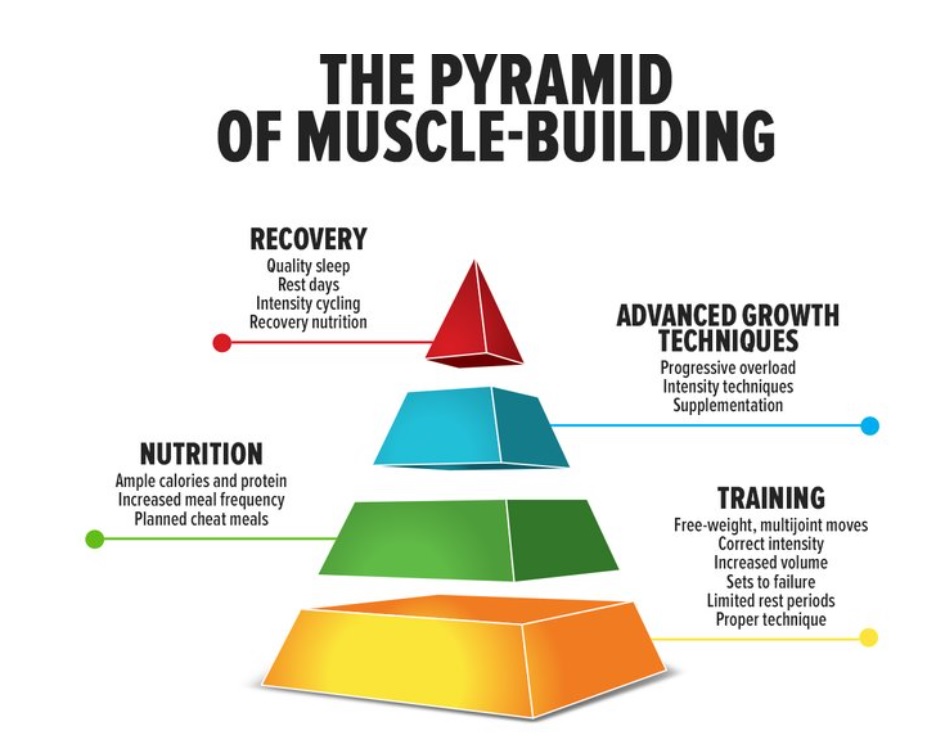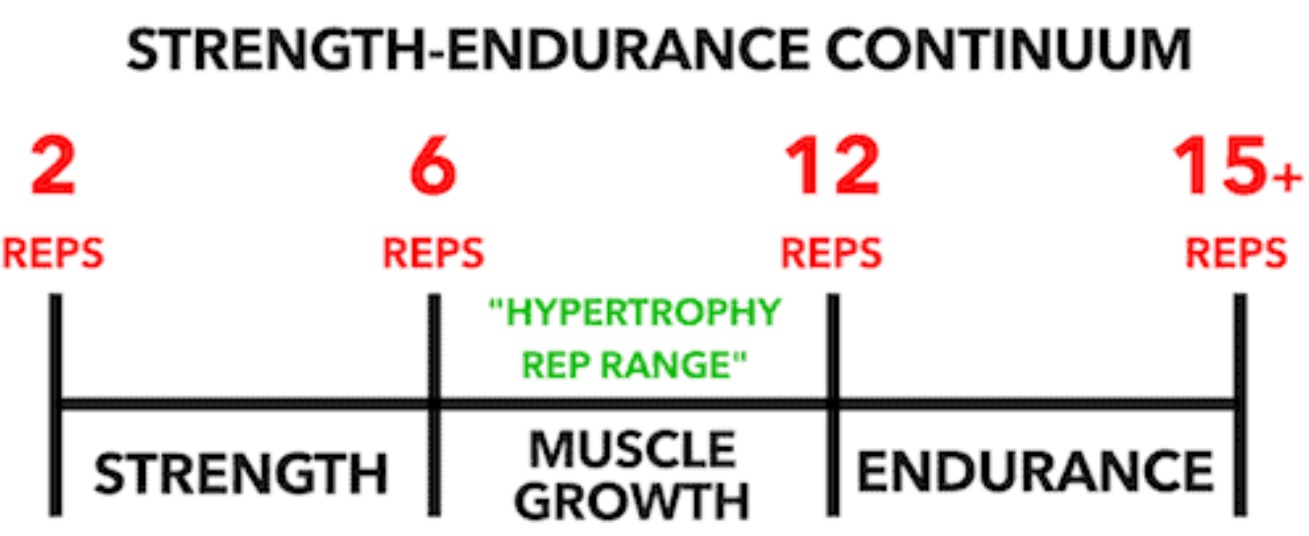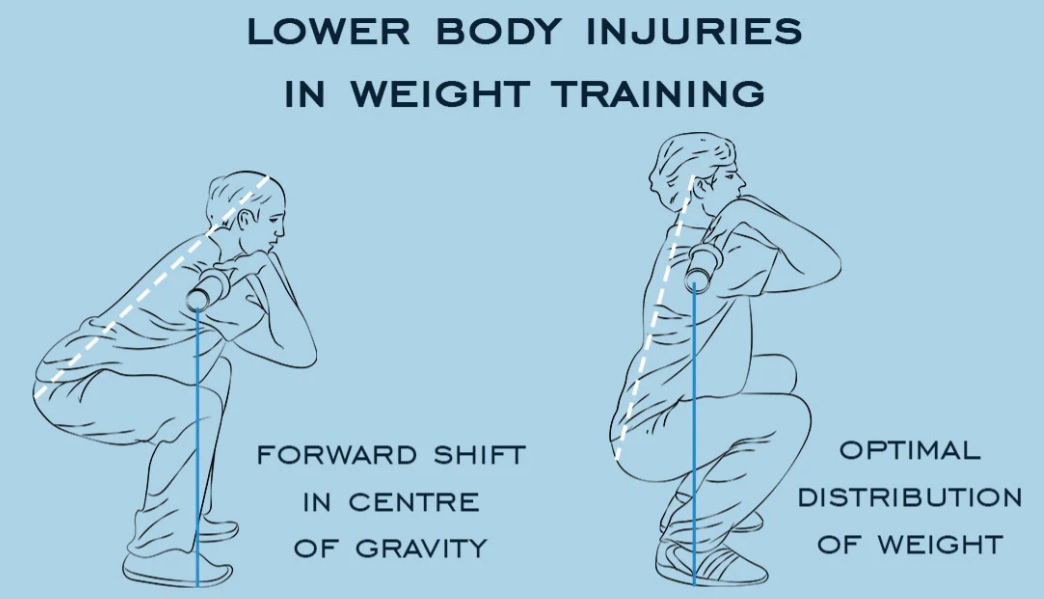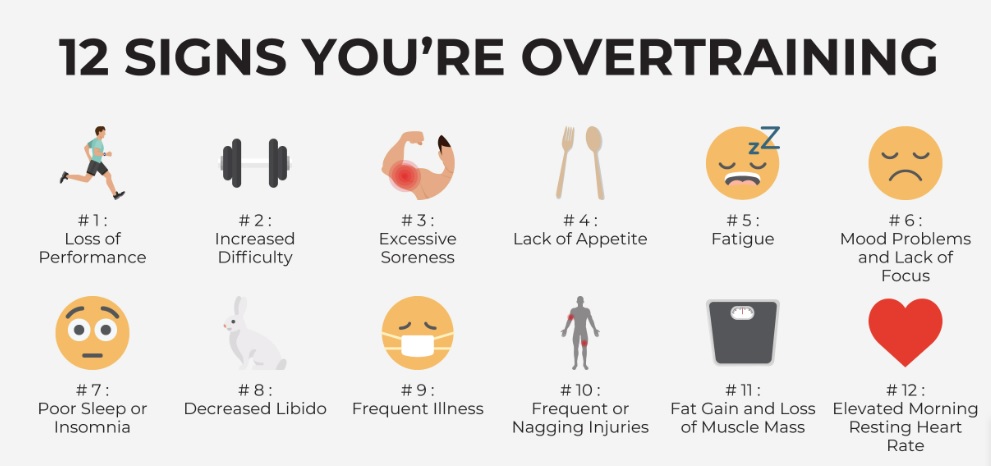Introducing intensity and consistency as a “cheat code” in the context of fitness implies that they offer a strategic advantage or shortcut to achieving desired results. Here’s a detailed explanation of why intensity and consistency can be seen as a cheat code for fitness success.
Intensity
Let’s consider weightlifting. If you usually bench press 100 pounds for 3 sets of 10 repetitions, increasing the intensity could mean bench pressing 150 pounds for 3 sets of 6 repetitions. The higher weight and lower rep range represent an increase in workout intensity.

Key Parameters of Muscle Building Intensity
Intensity in muscle building refers to the level of effort and resistance applied during workouts. Several parameters help gauge and adjust the intensity to optimize muscle growth. Here are key parameters in intensity for muscle building. The amount of weight lifted is a fundamental intensity parameter. Increasing resistance challenges muscles to adapt and grow. Common measures include:
- Repetition Maximum (RM): Indicates the maximum weight lifted for a specified number of repetitions (e.g., 1RM for a single repetition).
- Percentage of 1RM: Training at a percentage of your one-repetition maximum (e.g., 80% of 1RM) allows for progressive overload.
- Repetition Range: The number of repetitions performed in a set influences muscle adaptation.
Different repetition ranges have various effects:
- Low Repetitions (1-5): Emphasize strength and neural adaptations.
- Moderate Repetitions (6-12): Balance between strength and hypertrophy (muscle growth).
- High Repetitions (12+): Focus on muscular endurance and metabolic stress.

- Sets: The number of sets per exercise affects training volume and intensity. More sets can increase muscle stimulation:
- Single Sets: Lower intensity, suitable for beginners or maintenance.
- Multiple Sets: Higher intensity, ideal for muscle hypertrophy.
- Rest Periods: Rest intervals between sets and exercises influence intensity. Shorter rests increase intensity by challenging muscular endurance and metabolic stress, while longer rests allow for heavier lifting and maximal strength development.
- Time Under Tension (TUT): The duration that muscles are under load during repetitions affects muscle stimulation. Slower repetitions and isometric holds increase TUT, enhancing intensity for hypertrophy.
- Exercise Selection: Choosing compound exercises that engage multiple muscle groups (e.g., squats, deadlifts) inherently increases intensity due to the greater demand on the body.
How High-Intensity Exercises Boost Metabolism and Stimulate Muscle Growth?
High-intensity exercises have several profound effects on the body:
- Metabolism Boost: High-intensity workouts, like HIIT or intense weightlifting, demand more energy during the activity. This increased energy expenditure continues even after the workout as the body works to repair muscle tissue and restore homeostasis. This post-exercise calorie burn is referred to as excess post-exercise oxygen consumption (EPOC) or the “after-burn effect. “The more intense the workout, the greater the EPOC, leading to more calories burned even at rest.
- Muscle Growth Stimulation: High-intensity resistance training causes microscopic damage to muscle fibers. The body repairs these damaged fibers, making them thicker and stronger, resulting in muscle hypertrophy (growth). Intense workouts stimulate the release of growth hormone and testosterone, further promoting muscle development.
Examples:
Consider a HIIT workout where you sprint for 30 seconds and then rest for 30 seconds. This cycle is repeated for 20 minutes. Compare this to a moderate-intensity steady-state jog for the same duration. The high-intensity sprinting will burn more calories during the workout and continue to burn calories at an elevated rate post-exercise, making it more effective for fat loss.

Scientific Evidence Supporting the Benefits of Intensity:
Numerous studies have demonstrated the benefits of high-intensity exercise:
- A study published in the Journal of Applied Physiology (2008) found that HIIT increased fat oxidation and improved insulin sensitivity.
- A research article in the American Journal of Physiology (2002) showed that high-intensity resistance training resulted in significant muscle hypertrophy.
- The Journal of Obesity (2011) published a study indicating that high-intensity interval exercise leads to greater reductions in body fat compared to steady-state aerobic exercise.
Factors Influencing Muscle building and Fat Loss
Consistency
- Progress Amplification: Consistency means sticking to your workout and nutrition plan over an extended period. When you consistently challenge your body, it adapts by getting stronger and leaner over time. This compounding effect can lead to remarkable transformations.
- Habit Formation: Consistency helps build healthy fitness habits. When exercise and healthy eating become routine, you’re less likely to be derailed by occasional indulgences or setbacks.
- Preventing Plateaus: Consistency reduces the likelihood of hitting a plateau. Even when progress slows down, staying consistent can help you break through barriers and continue improving.
- Mental Resilience: Consistency isn’t just physical; it’s mental too. It teaches discipline, resilience, and determination—qualities that are valuable not only in fitness but also in other areas of life.
- Sustainable Results: The results achieved through consistency are more likely to be sustainable. Crash diets and sporadic workouts often lead to short-lived results, while a consistent approach promotes lasting change.
Muscle Building and Fat Loss: Aesthetic, Health, and Confidence Benefits
Aesthetic Benefits:
- Definition and Proportion: Muscle building contributes to a well-defined physique by increasing muscle mass and tone. For example, individuals who focus on strength training exercises like bench presses, curls, and lateral raises can develop a more sculpted upper body. This includes a broader chest, defined biceps, and shoulders that create a V-shaped appearance.
- Symmetry and Balance: Muscle development helps achieve a balanced and proportional physique. Workouts targeting various muscle groups ensure that the body maintains symmetry. For instance, leg workouts like squats and lunges can create well-defined quads and calves, complementing the upper body’s development.
- Shape and Contours: Building muscle adds shape and contours to the body, enhancing overall aesthetics. For example, well-developed back muscles, such as the latissimus dorsi (lats), can create a V-tapered appearance; accentuating the waistline and making the midsection appear narrower.

Leaner Appearance Through Fat Loss:
- Muscle Definition: Reducing body fat levels is like peeling away layers to reveal the underlying muscle structure. For instance, abdominal muscles become more visible as excess fat is shed, resulting in the coveted “six-pack” appearance.
- Sculpted Features: Fat loss enhances the definition of various muscle groups, such as the deltoids, triceps, and quadriceps. As body fat decreases, these muscles become more pronounced, creating a sculpted and toned appearance.
- Vascular Definition: Lowering body fat percentages can also reveal veins and vascular features, contributing to a vascular, “ripped” look. This can be especially noticeable in the arms and legs.
- Improved Body Proportions: Fat loss can help achieve better body proportions by reducing fat in areas where it tends to accumulate, such as the waist and hips. This can result in a more balanced and visually appealing figure.
Challenges in Muscle Building and Fat Loss Pursuits
Achieving the fitness goals of muscle building and fat loss can be challenging for many individuals due to a variety of reasons. Here’s a detailed explanation of some common challenges people face when pursuing these objectives:
Exercise Challenges:
- Time Constraints: Busy schedules can make it challenging to allocate enough time for workouts, especially if individuals have other responsibilities such as work and family.
- Injury Risk: Incorrect form or overtraining can lead to injuries, which can disrupt workout routines and progress.
- Plateaus: Hitting a plateau, where progress stalls, can be frustrating and demotivating. It can be difficult to know how to break through these plateaus effectively.

Psychological Challenges:
- Lack of Motivation: Staying motivated over the long term can be tough, particularly when results are slow to manifest.
- Body Image Issues: Negative body image and unrealistic expectations can lead to dissatisfaction and hinder progress.
- Self-Doubt: Doubting one’s ability to achieve their fitness goals can be a significant obstacle, leading to a lack of commitment.
Health Challenges:
- Metabolic Factors: Metabolic conditions or hormonal imbalances can make it more challenging to lose fat or build muscle.
- Medical Issues: Certain medical conditions or medications can affect one’s ability to achieve these goals or require special considerations.
- Digestive Issues: Excessive exercise or drastic dietary changes can sometimes lead to digestive problems, including diarrhea.
- Nutrient Absorption: High-intensity workouts and dietary restrictions may impact nutrient absorption in the digestive tract.
Inconsistency
A lack of consistency in both diet and exercise routines can significantly hinder progress, as results often require sustained effort over time.
Understanding and addressing these challenges is crucial for individuals looking to succeed in their muscle-building and fat-loss endeavors. Tailoring strategies to overcome these obstacles, seeking support from professionals or support networks, and maintaining a positive mindset can all contribute to a higher likelihood of achieving these fitness goals.
The Concept of Overtraining and Its Negative Effects
Overtraining occurs when individuals push their bodies beyond their capacity to recover adequately. This can have several negative effects on both physical and mental health.
- Physical Symptoms: Overtraining can lead to fatigue, chronic soreness, decreased immune function, and an increased risk of injuries. Digital health monitoring might reveal elevated resting heart rates, indicating excessive stress on the cardiovascular system.
- Plateaus and Decreased Performance: Overtrained individuals often experience plateaus or even a decline in performance despite increased effort. Digital tracking might show stagnation or deterioration in workout performance metrics over time.
- Hormonal Imbalances: Overtraining can disrupt hormonal balance, leading to imbalances in cortisol (a stress hormone) and testosterone. This imbalance can negatively impact muscle growth and fat loss, which might be reflected in digital hormone level measurements.

Dietary Guidelines for Fitness Goals
Macronutrient Ratios
The optimal macronutrient ratios can vary based on individual goals and preferences. However, a common guideline is to aim for a balanced distribution of macronutrients:
- Protein: Around 20-30% of total daily calories to support muscle growth and repair.
- Carbohydrates: Approximately 45-55% for energy and workout performance.
- Fats: Roughly 20-30% to support hormone production and overall health.
- Pre-workout meal: A balanced meal 1-2 hours before exercise for energy.
- Post-workout meal: A meal or snack rich in protein and carbohydrates to aid recovery.
Benefits of Tracking Progress
Tracking progress in your fitness journey offers several significant benefits, both in terms of motivation and goal attainment:
- Motivation: Seeing tangible progress can be highly motivating. It provides a sense of accomplishment and reinforces your commitment to your fitness goals. This motivation helps you stay consistent with your workouts and nutrition.
- Goal Clarity: Tracking allows you to define clear and measurable goals. Knowing what you’re working toward makes it easier to create effective workout plans and dietary strategies.
- Adaptation: Tracking helps you make informed decisions about your fitness routine. If you notice that a particular workout or dietary approach isn’t yielding results, you can adjust and adapt to stay on the right track.
- Accountability: Tracking holds you accountable for your actions. When you record your workouts, meals, and progress, you’re less likely to deviate from your plan or engage in unhealthy behaviors.
Tools and Apps for Monitoring Fitness Gains
Several tools and apps can help you monitor your fitness gains effectively:
- Fitness Trackers: Wearable fitness trackers like Fitbit, Garmin, or Apple Watch can record data on steps taken, heart rate, sleep patterns, and more. They provide a holistic view of your daily activity and health metrics.
- Fitness Apps: Apps like MyFitnessPal, Lose It!, or Cronometer allow you to log meals and track calorie intake. Some apps also offer workout logging and progress-tracking features.
- Workout Journals: Traditional workout journals or digital versions like Ever Note or Google Sheets can help you keep detailed records of your workouts, including sets, reps, weights, and notes on how you felt during the session.
- Progress Photos: Taking regular photos from various angles can visually document changes in your physique over time. These can serve as powerful motivational tools.
Measuring Progress Beyond Weight on a Scale
While weight on a scale can be a useful metric, it’s essential to recognize that there are other valuable ways to measure progress:
- Body Composition: Tracking changes in body composition, such as muscle mass and body fat percentage, provides a more accurate picture of your physical transformation. Bioelectrical impedance scales or DEXA scans can help with this.
- Strength and Performance: Monitoring your strength gains, endurance levels, and overall performance in workouts is a tangible sign of progress. Are you lifting heavier weights, running faster, or performing more repetitions? These are all important indicators.
- Energy Levels: Pay attention to your energy levels throughout the day. Increased energy and improved mood are often signs of better fitness and nutrition habits.
- Well-Being: Improved well-being, including better sleep, reduced stress, and enhanced mental clarity, can be indirect but essential indicators of progress.









